Like the Canal, the industries that formed along the corridor needed to adapt and change as technology, power, and market demand changed throughout history. During the early day of the Canal, industries could get by working in a relatively small area. Local grain, timber, and materials were brought to the mills, and then the products were used within the local market. The Canadian Industry during the first part of the 19th Century remained local, colonial, provincial. They were dedicated mainly to the extraction and processing of raw materials. But the 1850s brought two significant changes, the first being an effective railway network that provided further reach for goods and materials the second the first free trade agreement with the United States and the removal of the Corn Laws. The completion of the larger Third Canal and the introduction of electrical generation combined with these other factors and brought a renewal of industrial growth along the Canal and an expansion of the types of Industry. It also allowed the Welland Canal corridor to transform into a third industrial centre for Ontario standing next to Toronto and Hamilton.

Nikon FM – AI Nikkor 28mm 1:3.5 (Yellow-12) – Fomapan 100 @ ASA-100 – Adox FX-39 II (1+9) 7:00 @ 20C
Minolta Maxxum 9 – Minolta Maxxum AF 28-135mm 1:4-4.5 – Kodak Tri-X 400 @ ASA-400 – Kodak D-76 (1+1) 9:45 @ 20C
Minolta Maxxum 9 – Minolta Maxxum AF 28-135mm 1:4-4.5 – Kodak Tri-X 400 @ ASA-400 – Kodak D-76 (1+1) 9:45 @ 20C
While multiple factors aided in the modernisation of the Canal’s Industry two played a big part in that. The Railroad and Hydro-Electricity, I have already written extensively on the railroad and its presence in Ontario I will skip over that in detail. The first designs for electrical generation using running water came in the 1770s when a French Engineer, Bernard de Bélidor, drew up the plans for water turbines to drive an electrical generator. But it took nearly a century for technology to catch up to the design. In 1878, William Armstrong, designed and built the first practical electrical generator driven by water, using it to drive a single arc lamp in Northumberland. Large scale generation arrived in North America in 1881 when Jacob Schoellkopf constructed a generating station in Niagara Falls, New York (where the Robert Moses Generating Station is today). For Canadians the first station on the Welland Canal arrived in 1887, using water from Lock 12 of the Second Welland Canal. The small station generated power to electrify a streetcar network initially formed in 1876 using horse-drawn trolleys. The old Second Canal also drove an electrical generator at the Canada Hair Cloth factory formed in 1888 in St. Catharines. And in 1890 Maple Leaf Rubber in Port Dalhousie used water from Lock 1 of the Third Canal to drive a hydroelectric generator that provided enough power to drive the factory and supply power to a new electric streetlamp network. In 1898 the first large scale generator for the area opened at DeCew Falls, and now the Welland Canal needed to share water from Lake Erie to keep the lights on and the factories running. Further development in the early 20th Century saw a small station set up in Welland and larger stations open at Niagara Falls. Hydroelectric generation became the primary source of power for the Province and in the years between the two World War, Sir Adam Beck and a team of engineers known as the Bright Boys that modernised the entire generation system for Ontario. Resulting in the construction of many hydro generating stations built across Ontario with the biggest at Queenston opening in 1922.
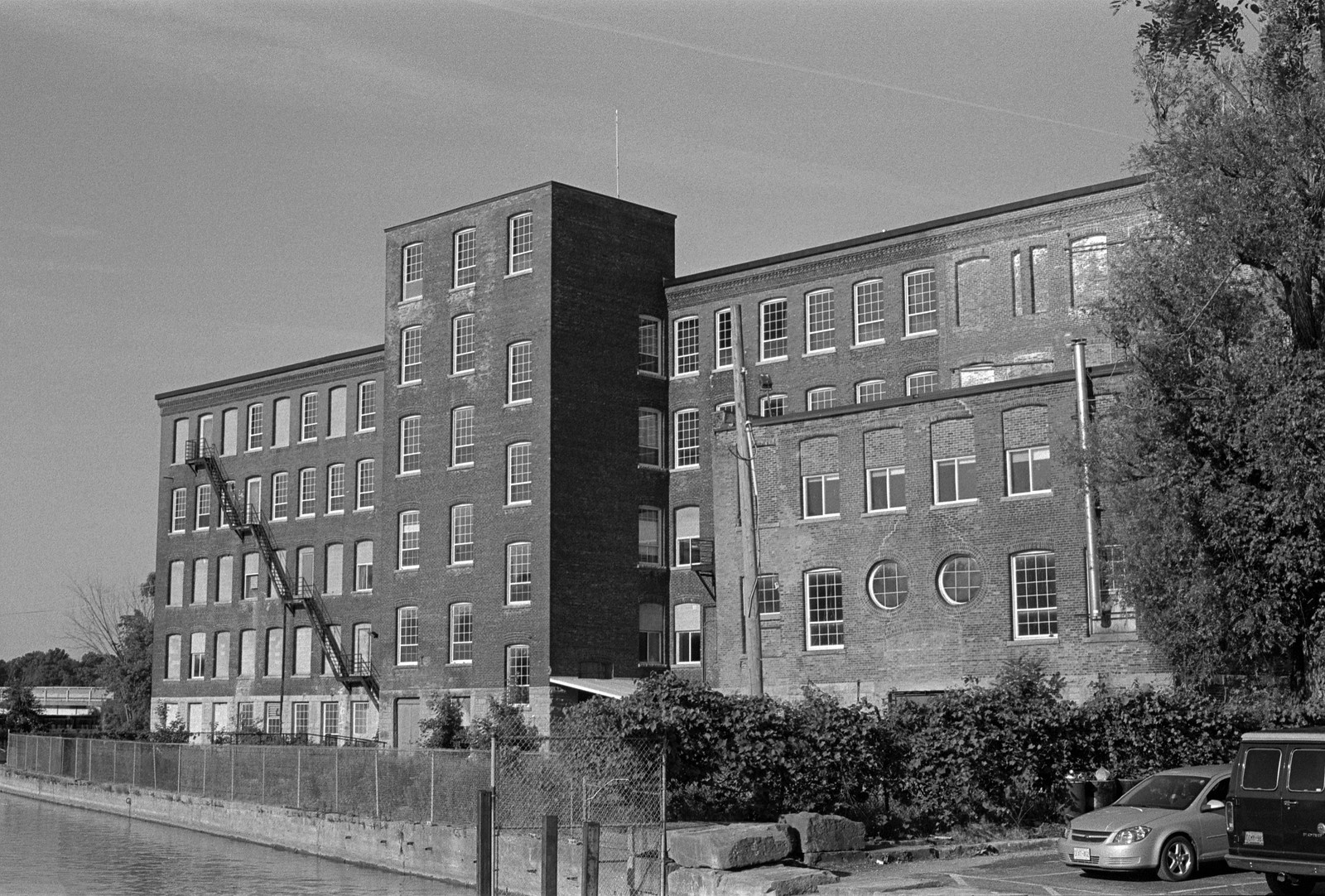
Minolta Maxxum 9 – Minolta Maxxum AF 50mm 1:1.7 – Kodak Tri-X 400 @ ASA-400 – Kodak D-76 (1+1) 9:45 @ 20C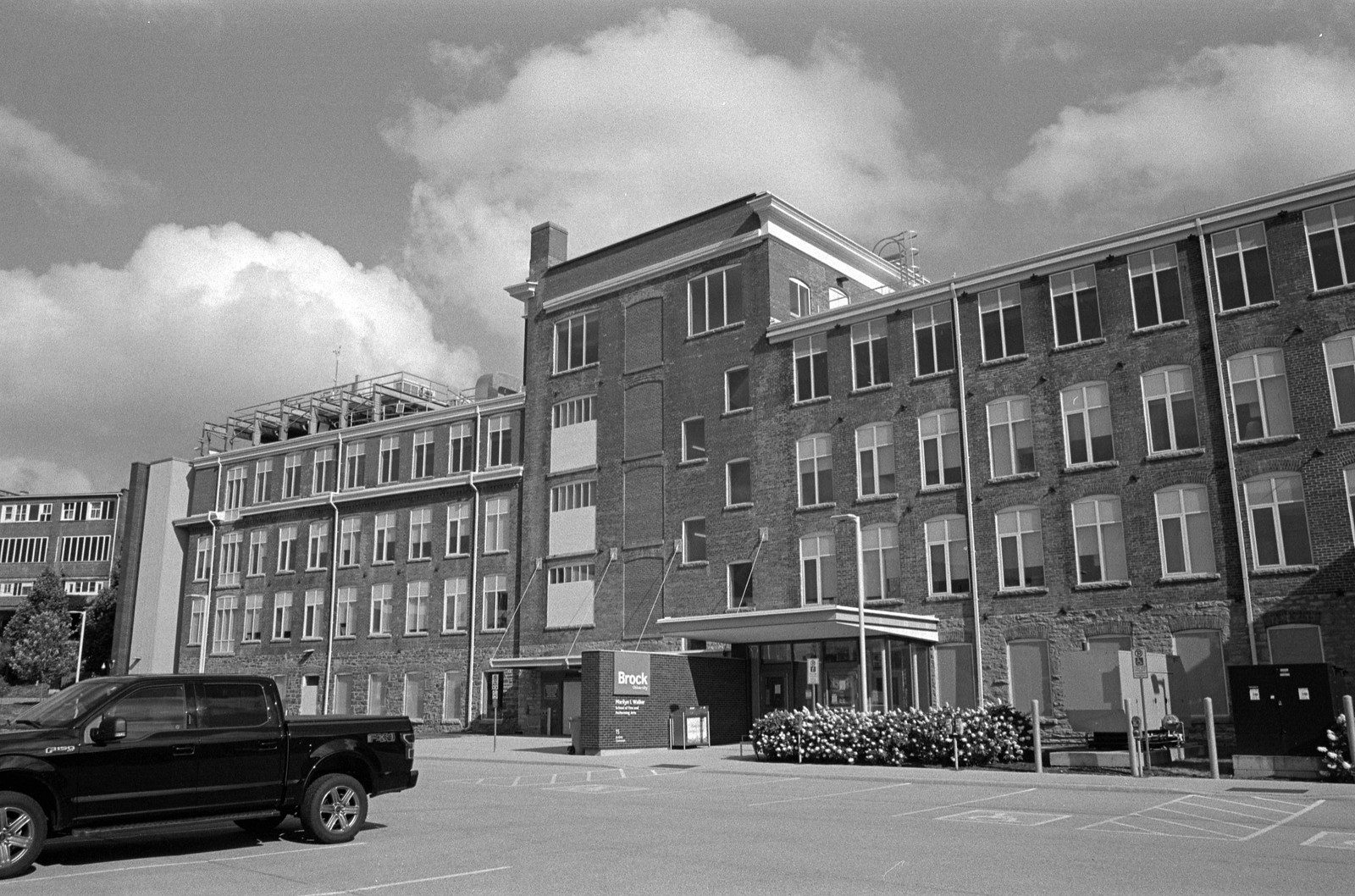
Minolta Maxxum 9 – Minolta Maxxum AF 28mm 1:2.8 – Kodak Tri-X 400 @ ASA-400 – Kodak D-76 (1+1) 9:45 @ 20C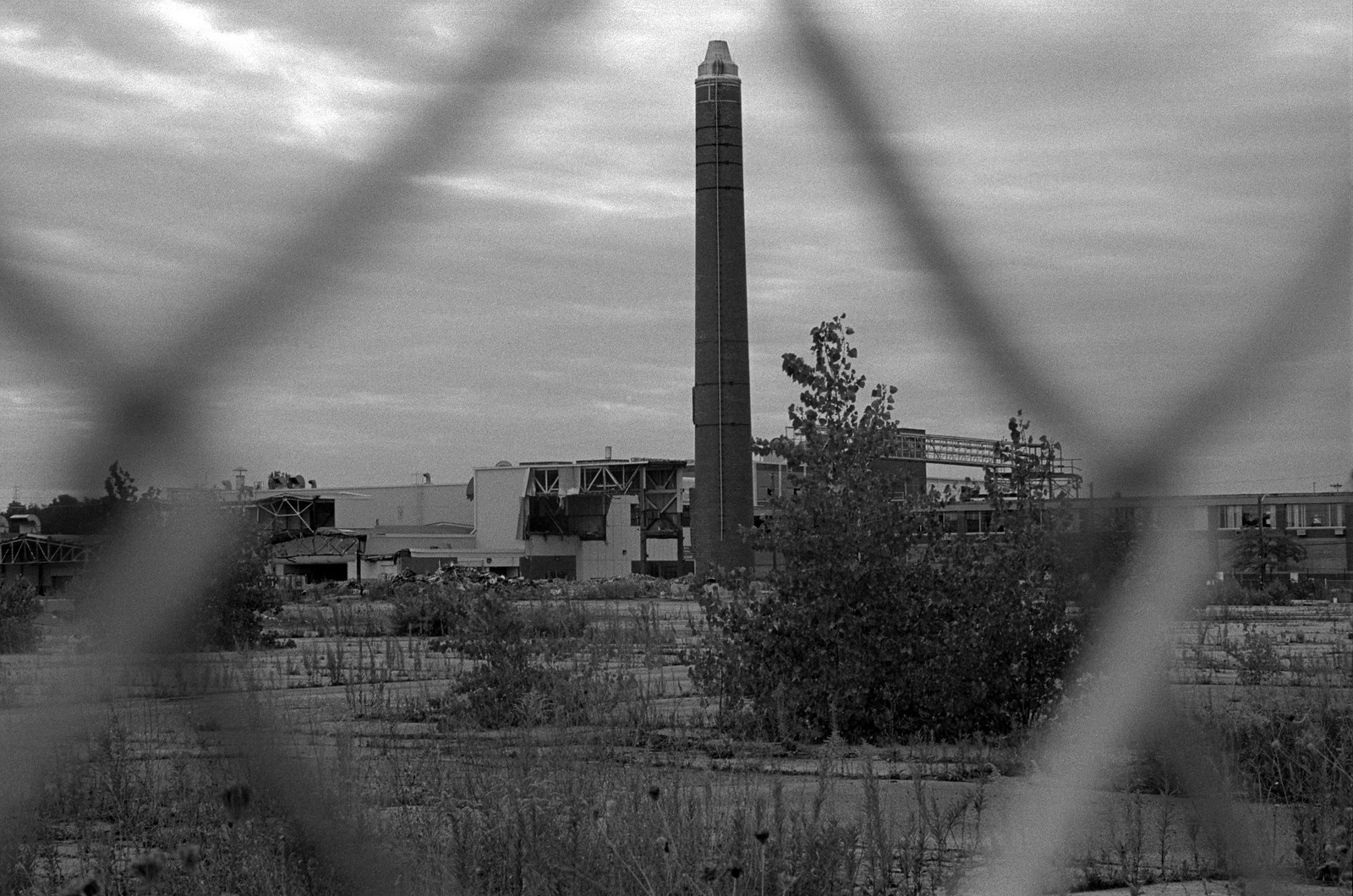
Minolta Maxxum 9 – Minolta Maxxum AF 28-135mm 1:4-4.5 – Kodak Tri-X 400 @ ASA-400 – Kodak D-76 (1+1) 9:45 @ 20C
Canadian Confederation brought a new sense of self to the entire country, and that sense spread through almost every element of Canadian society. It also saw a movement away from simple milling and into manufacturing of goods, rubber, carbide lamps, home products such as bed, steam engines and boilers. Firms like Collinson & Burch produced knives and farm equipment. The two biggest manufacturing firms McKinnon & Dash which opened in St. Catharines and Beatty & Sons in Welland. Fruit production and winemaking thrived as new markets opened up and canning plants provided longevity to their product. While the Third Canal brought in the capacity for bigger Industry, the Canal would not allow the use of water rights to drive machinery. By the 1880s many had switched to Hydroelectric generation first in small factory specific generator and later large-scale generators at DeCew and Niagara Falls. Many of these firms took over older mills. Merritton’s Beaver Cotton Mill for example burned and was rebuilt and reopened as a Rubber Factory, Lybster Cotton Mill became a Paper Mill joining the Riordan Paper Mill in the Factory Town. Canada Hair Cloth produced high-quality fabrics for use in building railroad coaches in St. Catharines opened in 1888. Even electrical components that went into the generation system were built along the Canal when Packard opened a plant in St. Catharines to produce transformers. But it wasn’t only Canadian firms, American companies like Frost Wire Fence opened up in Welland. For Welland, the unique position allowed several major railroads to combine in their town, especially when the Canadian Pacific Line opened up the western prairies. Thorold’s flour mills were known for producing some of the best flour in Canada. The discovery of natural gas further helped Welland’s fortunes. By the end of the Century, despite some setbacks in the area of ship construction, the industrial might of the Welland Canal could only improve.

Minolta Maxxum 9 – Minolta Maxxum AF 28mm 1:2.8 – Kodak Tri-X 400 @ ASA-400 – Kodak D-76 (1+1) 9:45 @ 20C
Minolta Maxxum 9 – Minolta Maxxum AF 28-135mm 1:4-4.5 – Kodak Tri-X 400 @ ASA-400 – Kodak D-76 (1+1) 9:45 @ 20C
Minolta Maxxum 9 – Minolta Maxxum AF 28-135mm 1:4-4.5 – Kodak Tri-X 400 @ ASA-400 – Kodak D-76 (1+1) 9:45 @ 20C
Many communities encouraged the arrival and placement of big firms in their communities. Often using the bonusing technique, cheap land, tax cuts, and other incentives to help attract and keep businesses around. Any work would attract workers, their families, and more to the communities. While St. Catharines, Thorold, and Merritton enjoyed a sizeable industrial base, Welland would be the star of the 20th Century industrial scene on the Welland Canal. While Beaty & Sons had expanded to nearly fourteen acres by 1900, the power generated by a hydroelectric plant and the arrival of power from DeCew Falls opened up new opportunities. In 1906 Plymouth Cordage, an American firm, became the newest business to set up shop in Welland. Plymouth was unlike past arrivals; they built a recreation hall for the communities and brought in housing for workers and their family next to the plant. Soon larger plants opened up, processing rich mineral deposits discovered in Northern Ontario, Nickle, Cobalt, Zinc and Silver. Massive foundries and processing plants opened up in Welland, ships loaded with iron and steel sailed the Third Canal, and railways hauled in raw material and hauled out finished products. In St. Catharines, McKinnon & Dash opened up a new plant on Ontario Street, and even some plants began to supply parts for the growing automotive Industry. When the Great War broke out in 1914, the Welland Canal stood ready. Steel mills in Welland produced armour for cars and tanks. Manufacturing firms built rifles and ammunition. Boilers and Steam Engines for destroyers, paper for paybooks and reports. Fabric for uniforms, bandages, and tents. Flour and Fruit for field kitchens Not only that but men also left the factories for the trenches, and the women took to the fields and factories. Once the war was done, the work of Industry continued. Beaty & Sons opened their small shipyard to build five ships to help make the fourth Canal. Some factories survived such as the vast steel mills in Welland. McKinnon became part of General Motors, and several smaller firms joined together to form Hayes Diana. But not every business survived, Merritton’s factories fell silent by the end of the 1920s, Merritton Rubber, Union Carbide, Riordian Paper. Only the Lincoln Paper Mill survived. The famous Thorold Flour Mill closed in 1929, and many other firms in Thorold at the closure of the Second and Third Canals. However, Robin Hood Flour opened a new mill out in Humberstone. Many of these did not even restart when the Second World War opened in 1939. Still, again the Welland Canal outputted material also from the steel mills in Welland and Automotive Plants in St. Catharines.

Minolta Maxxum 9 – Minolta Maxxum AF 50mm 1:1.7 – Kodak Tri-X 400 @ ASA-400 – Kodak D-76 (1+1) 9:45 @ 20C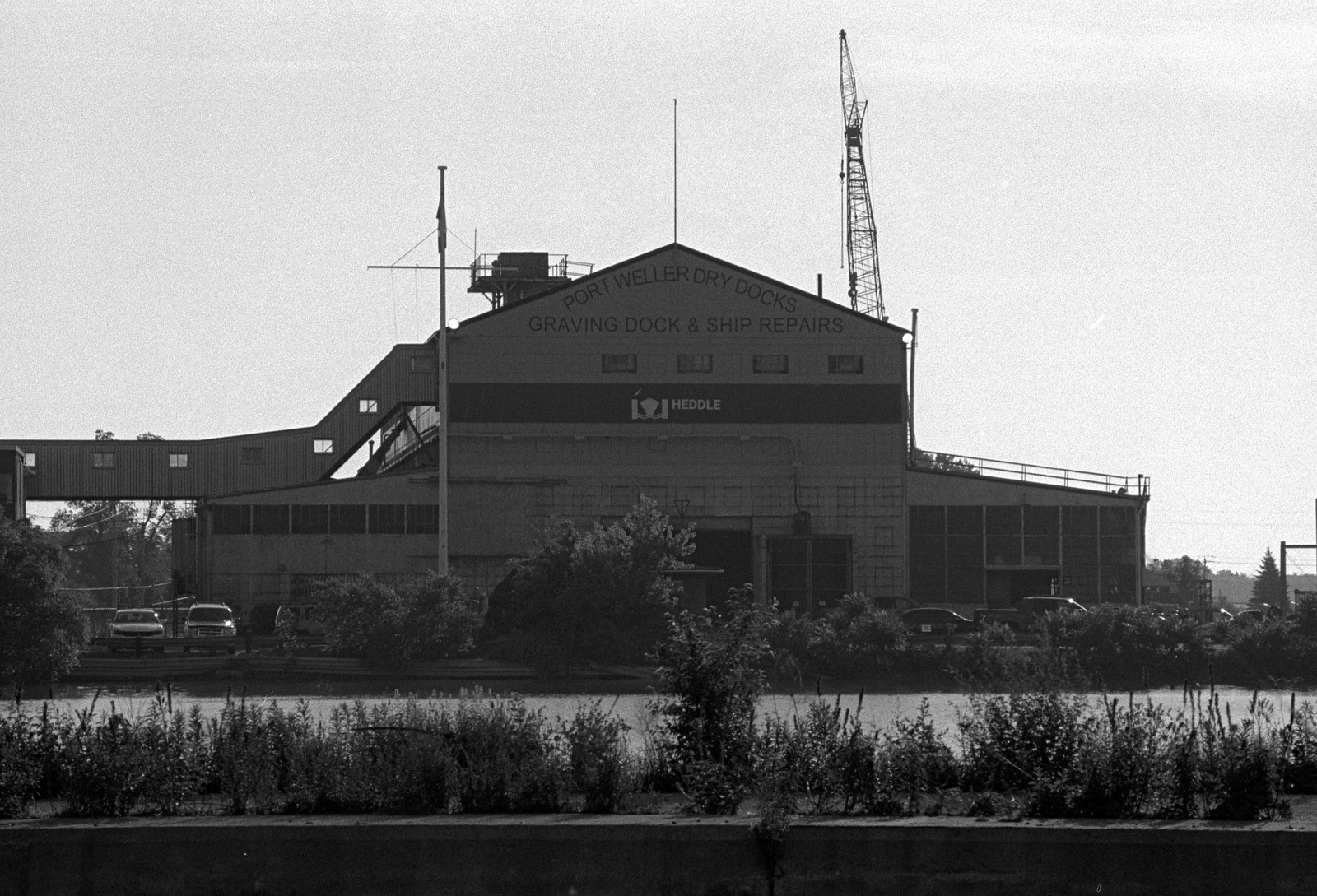
Minolta Maxxum 9 – Minolta Maxxum AF 70-210mm 1:4 – Kodak Tri-X 400 @ ASA-400 – Kodak D-76 (1+1) 9:45 @ 20C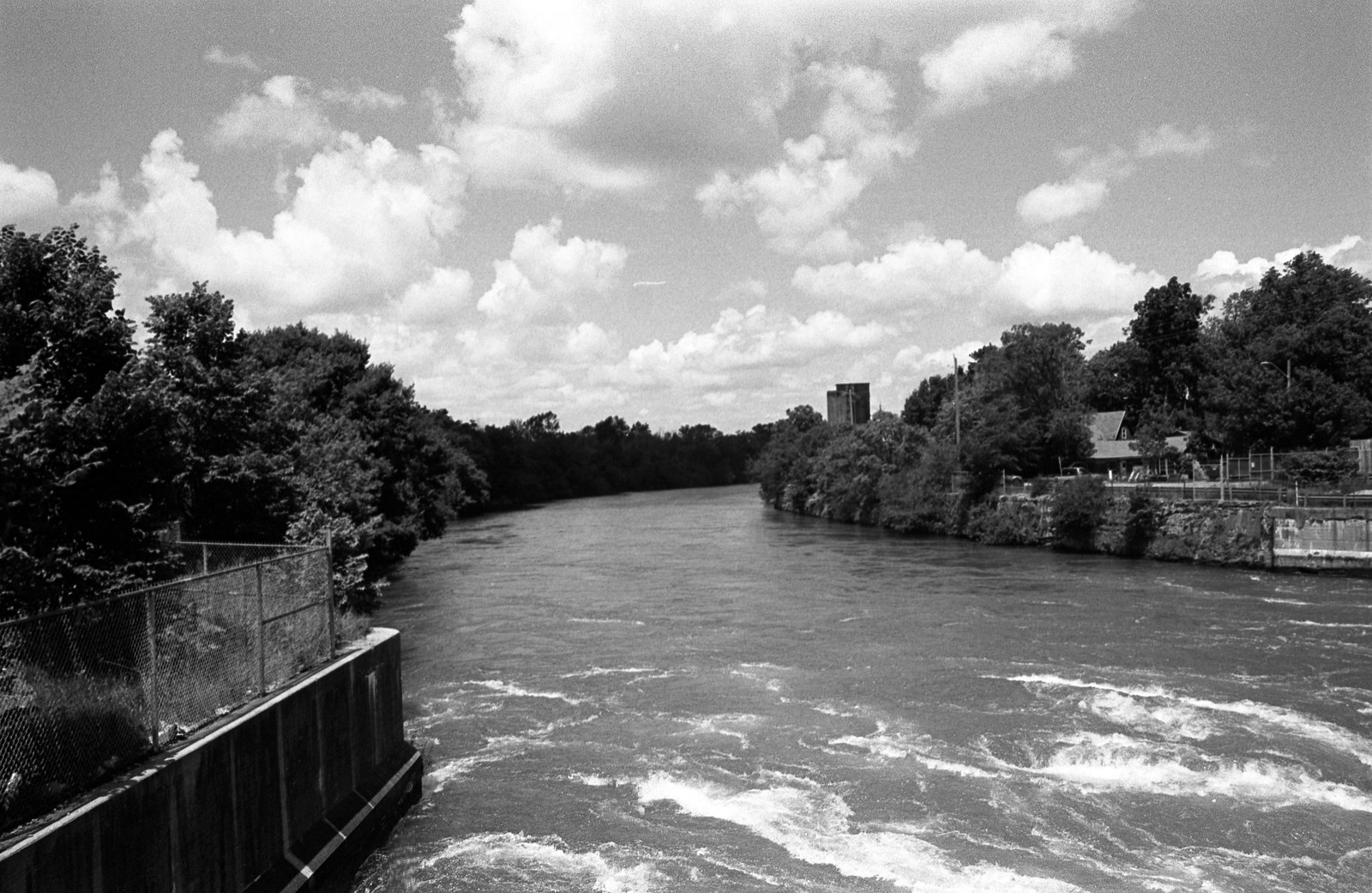
Minolta Maxxum 9 – Minolta Maxxum AF 28mm 1:2.8 – Kodak Tri-X 400 @ ASA-400 – Kodak D-76 (1+1) 9:45 @ 20C
The war economy again showed the world that Canada had the industrial might to play a significant roll around the world. And many companies that found their home on the Welland Canal took advantage of the post-war industrial boom. By the 1950s the Port Weller Docks (having acquired the Muir Brother’s Drydock in Port Dalhousie) returned to the shipbuilding industry. General Motors opened a new foundry and engine plant in Merritton. The Fourth Welland Canal now in full operation and a booming rail network brought in more trade. Welland boasted three steel mills and employed for most of the town’s workforce. But not every business survived, in 1962 Plymouth Cordage closed their doors and the rapid growth of Thorold, Welland, and St. Catharines gobbled up several smaller communities. Still, the industrial power of the region continued well into the late 20th Century. A worldwide recession in the first decade of the 21st Century hit the area hard. General Motors closed their Ontario Street plant and several steel mills in Welland shut down also as did the Port Weller Drydocks. Smaller firms felt the pinch even and the whole area slid into decline. But now some of the communities are starting to recover, small businesses and light manufacturing have returned, and there’s even word that the Port Weller Docks could reopen to shipbuilding. Urban renewal has cleaned up some areas of St. Catharines and even Welland. Other cities like Thorold are embracing the draw of the Welland Canal to tourism, and there is also the commercial side of things with outlet malls that attract travellers to and from the Niagara region.

Minolta Maxxum 9 – Minolta Maxxum AF 70-210mm 1:4 – Kodak Tri-X 400 @ ASA-400 – Kodak D-76 (1+1) 9:45 @ 20C
Minolta Maxxum 9 – Minolta Maxxum AF 28-135mm 1:4-4.5 – Kodak Tri-X 400 @ ASA-400 – Kodak D-76 (1+1) 9:45 @ 20C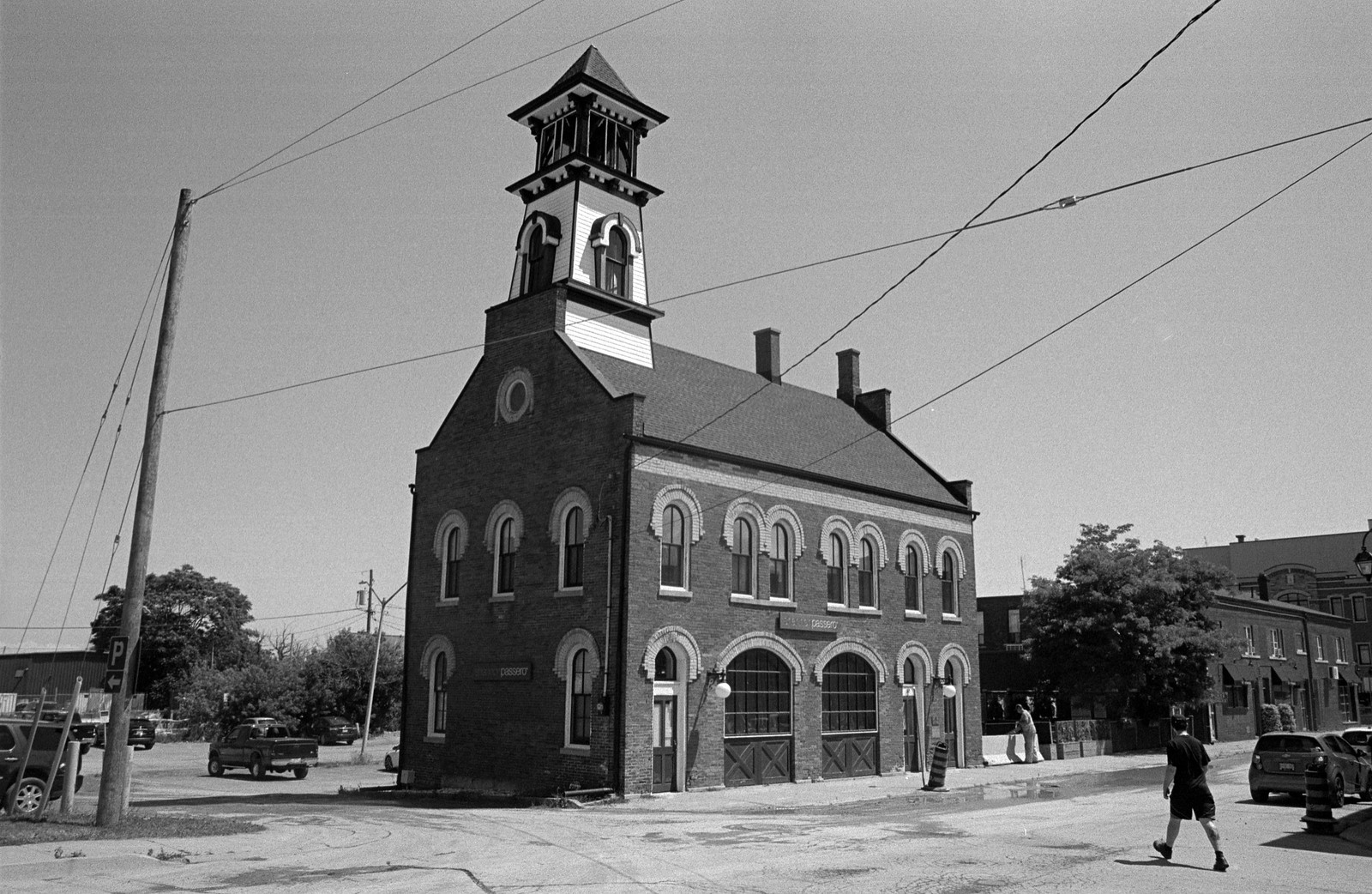
Minolta Maxxum 9 – Minolta Maxxum AF 35-70mm 1:4 – Kodak Tri-X 400 @ ASA-400 – Kodak D-76 (1+1) 9:45 @ 20C
The industrial history of the region is still being written today. And while the entire manufacturing power of Canada has declined since the end of the Second World War, there is still plenty of Industry left in the region. General Motor’s Engine Plant shows no signs of stopping and small business are again taking hold. If you’re into exploration, there are still plenty of abandoned buildings that you can trespass in, and I have visited many such facilities through the area in the past. But these days I much prefer to relax and enjoy the tourism and service industry in the smaller communities of Port Dalhousie, Thorold, and Port Colborne, sit back relax and enjoy a craft beer made locally and watch the ships and people drift by.
Written With Files From
Jackson, John N. The Welland Canals and Their Communities: Engineering, Industrial, and Urban Transformation. University of Toronto Press, 1997.
Styran, Roberta M., and Robert R. Taylor. This Colossal Project: Building the Welland Ship Canal, 1913-1932. McGill-Queen’s University Press, 2016.
Styran, Roberta M., and Robert R. Taylor. This Great National Object: Building the Nineteenth-Century Welland Canals. McGill-Queen’s University Press, 2012.
Styran, Roberta McAfee, and Robert R. Taylor. Mr. Merritt’s Ditch: a Welland Canals Album. Boston Mills Press, 1992.
Jackson, John N., and Fred A. Addis. The Welland Canals: a Comprehensive Guide. Welland Canal Foundation, 1982.
Styran, Roberta M, et al. The Welland Canals: the Growth of Mr. Merritt’s Ditch. Boston Mills Press, 1988.